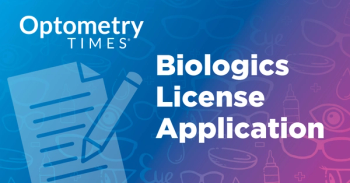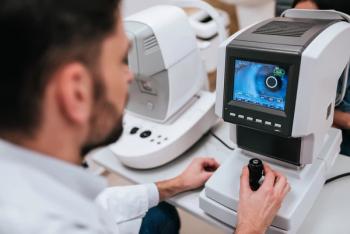
Study underscores importance of upper eyelid meibography in early detection of OSD, among other conditions
Study authors Preeya K. Gupta, MD; and Paul Karpecki, OD, formulated a case in their literature review for the routine evaluation of the upper eyelid during meibomian gland imaging.
A study recently published in Cornea has revealed that upper eyelid meibography could prove essential for early detection of ocular surface disease (OSD), contact lens dropout risk, postcataract dry eye, and potentially systemic autoimmune conditions.1,2 The study, “Comprehensive Assessment of the Meibomian Glands by Meibography: Why the Upper Eyelids Matter,” was authored by Preeya K. Gupta, MD; and Paul Karpecki, OD, and reviewed literature over the past 2 decades, formulating a case for the routine evaluation of the upper eyelid during meibomian gland (MG) imaging, according to a news release.1
The literature review included observational studies, clinical trials, and review and methodological papers.2
“Failure to diagnose dry eye disease and meibomian gland dysfunction associated with conditions such as Sjögren syndrome or thyroid eye disease (TED) in the early stages and taking appropriate action may result in persistent signs and symptoms,” Gupta and Karpecki stated in the study. “This could potentially lead to the development of chronic conditions that directly affect a patient’s visual quality, functionality, and overall wellbeing.”
The study authors noted that the historical difficulty with meibography to diagnose and manage ocular surface disease lies in the technical difficulty of consistent upper lid eversion and a lack of workflow-friendly tools.1
“The use of different meibography equipment results in images that are difficult to compare, leading to reproducibility issues,” the study authors stated. “Without a clear understanding of the histological and morphological changes observed in MG dropouts, some conclusions remain open to interpretation.”
Since the upper eyelid has more meibomian glands than the lower lid while being longer and more delicate, that part of the lid can be more prone to tortuosity and dropout.1 The study authors noted that upper lid gland tortuosity and meibum quality are major predictors of contact lens dropout.2
“Practitioners should screen for and educate especially contact lens patients about the importance of maintaining healthy MGs, which may potentially allow them to maintain comfortable contact lens use and increase their time wear,” the study authors stated. “Such revelation can be crucial in ensuring that contact lens wearers are properly monitored through meaningful workups, and a proactive approach is taken to ensure optimal outcomes and long-term contact lens wear.”
For postcataract surgery dry eye, the study authors note that proactively mitigating dry eye symptoms induced by surgery is possible by incorporating meibography for upper and lower eyelids into the precataract surgery evaluations. “[Surgeons] should implement the monitoring of both eyelids before and after the cataract surgery,” they stated. “Careful and active management of MGD in patients with high risk factors for DED after cataract surgery is warranted to prevent newly raised symptoms and ensure optimal surgical outcomes.”
Additionally, upper eyelid gland dropout is significantly more severe in patients with Sjögren syndrome than patients with dry eye not associated with Sjögren syndrome. Researchers also previously found that greater upper lid gland loss was observed in patients with TED due to altered blinking mechanics and ocular surface exposure, unveiling a link between upper lid structure and symptom severity.1
Ultimately, Gupta and Karpecki stated that new technologies can help aid in integrating eyelid assessment into MG evaluation to offset other challenges, such as eversion difficulty and chair time.2 “Innovative technologies now available to clinicians can facilitate adequate eyelid exposure for accurate image capture, interpretation, and diagnosis,” the study authors stated. “Morphological changes in the MG must be interpreted along with other clinical indicators for comprehensive assessment. Thorough evaluation of both upper and lower eyelids is necessary when assessing the relevance of MG function to ocular surface health.”
References:
New research reveals why upper eyelid imaging is critical for comprehensive meibomian gland assessment. News release. Meivertor. July 2, 2025. Accessed July 16, 2025.
Gupta PK, Karpecki P. Comprehensive assessment of the meibomian glands by meibography: Why the upper eyelids matter. Cornea. 2025;44(1):128-135. doi:10.1097/ICO.0000000000003729
Newsletter
Want more insights like this? Subscribe to Optometry Times and get clinical pearls and practice tips delivered straight to your inbox.










































